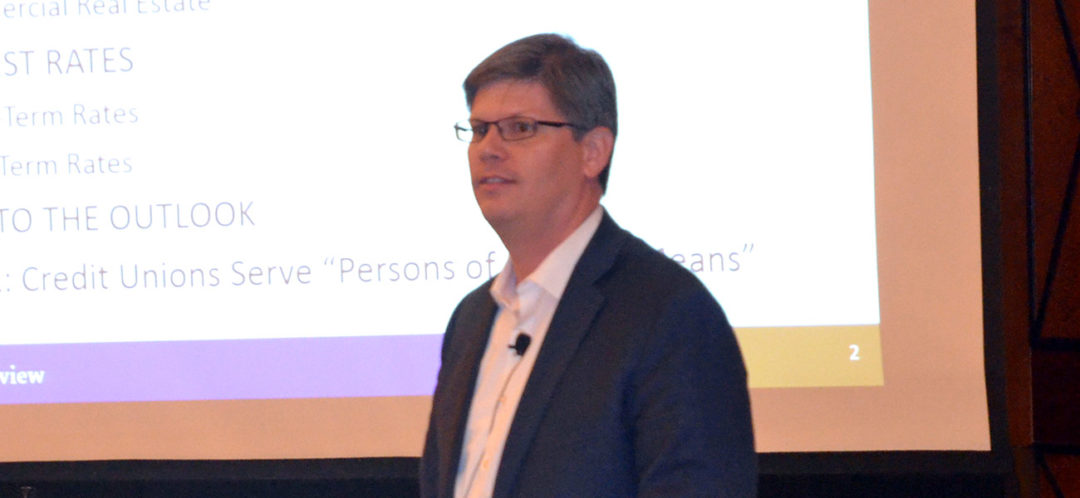
Potential risks lurking in the U.S. economy
Three areas of risk to watch.
Credit unions have “exceptional” capital levels that will serve them well during lean times, says NCUA Chief Economist Scott Borger.
“It’s important to maintain that,” he told attendees at the CUNA Economics & Investments Conference Monday in Las Vegas. “Ultimately, it means that U.S. consumers are better off.
Fueling credit unions’ stellar financial performance and high capital levels are a strong job market and solid loan growth. But this doesn’t mean credit unions are immune to risk.
Borger outlines risks in three key areas.
1. Credit union lending
While home sales were strong in the second quarter, they declined from the first quarter, Borger says. Regionally, home sales were strongest in the South and West, and weakest in the Northeast and Midwest.
Emerging risks in housing include:
- High-risk mortgages. Underwriting standards have relaxed among mortgages of more than $750,000 across all financial providers. Credit unions made 2,616 mortgages of $750,000 or more in 2016, Borger says. “It’s not a huge exposure, but it’s a couple billion dollars.”
- More mortgages are being made at four times the borrower’s income.
- High loan-to-income ratios in certain high-cost housing areas.
- Lower mortgage refinance volume due to rising mortgage rates.
Regarding auto loans, total vehicle sales are slowing, and there’s a higher inventory of used cars.
“That equates to lower prices on used cars,” Borger says, with a possible corresponding deterioration in collateral.
2. Interest rates
The Federal Reserve is closely watching for signs of inflation. It predicts slowly rising rates over the next few years.
“From a regulatory point of view, know how your strategy, balance sheet, and more perform based on different interest-rate scenarios,” Borger advises. “A lot of different scenarios can be painted.”
3. Risks to the outlook
Several “wild card” issues could affect the economy and, therefore, credit unions’ financial health.
They include:
- Monetary policy. Policymakers’ views on short-term interest rates vary widely, Borger says. Economic conditions and changes to tax/spending policy will determine the timing and pace of future interest-rate increases.
- Fiscal policy. The Trump Administration has signaled that it favors lower taxes, increased infrastructure spending, immigration reform, and reduced regulatory burden.
- External factors, such as an economic slowdown in China, the effect of Brexit on growth in the U.K. and European Union, and other geopolitical risks. “China has the biggest risk exposure,” Borger says. “Its economy has a big impact on the rest of the world.”